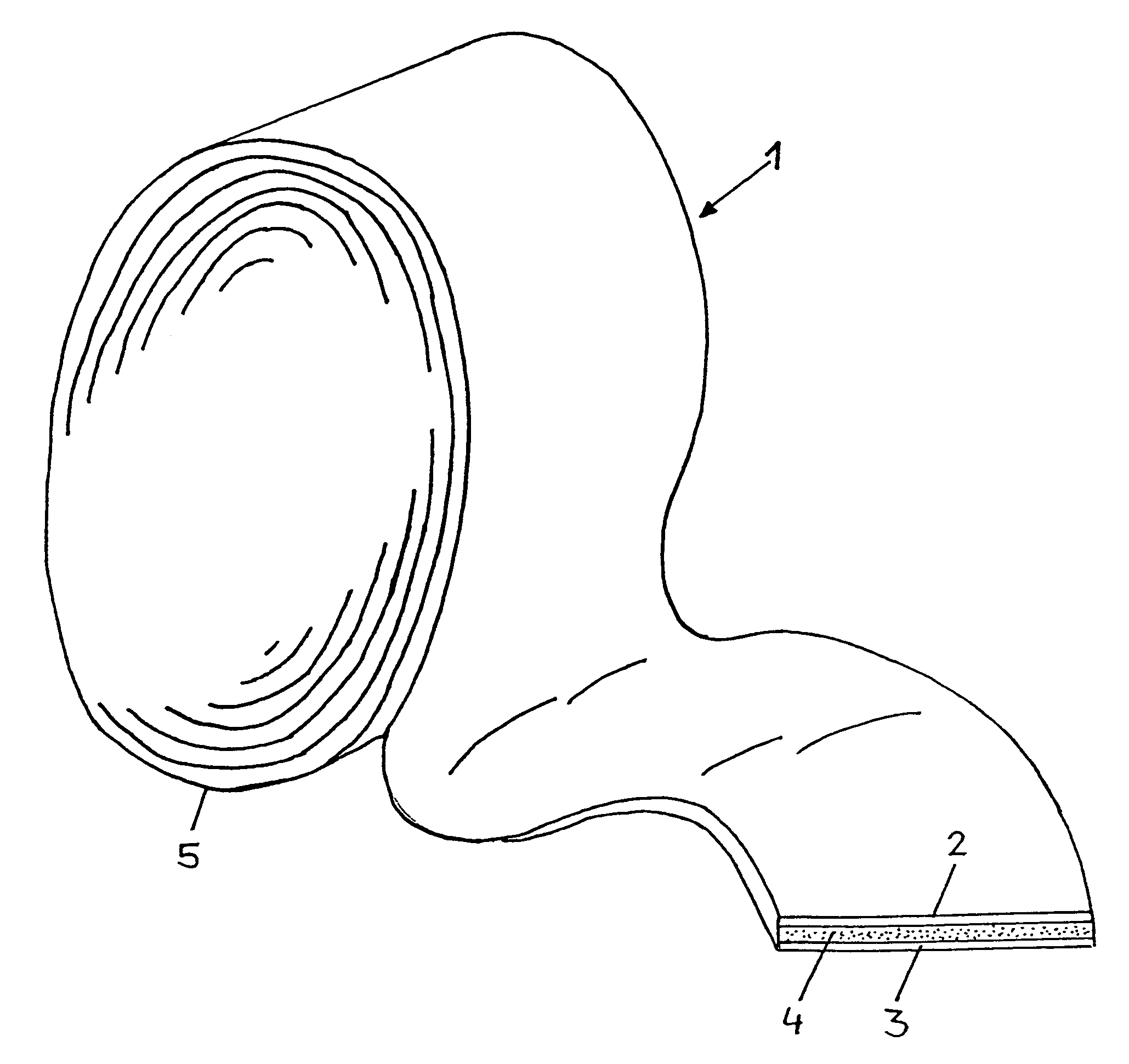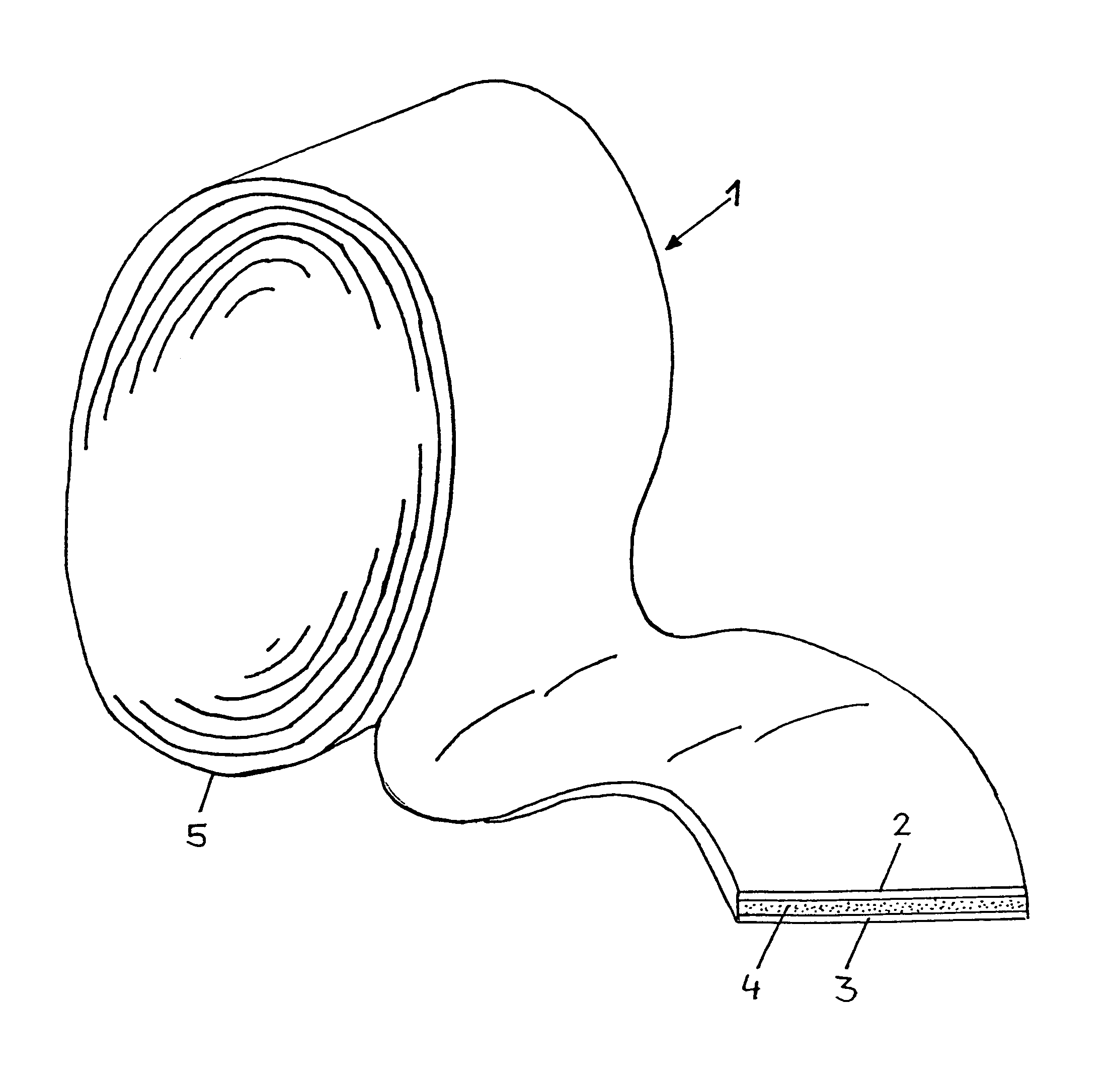Fixing means for temporarily fixing human or animal body parts
a technology for fixing means and body parts, applied in the field of temporary fixing means for human or animal body parts, can solve problems such as muscle atrophy, tendon hardening, and disadvantageous total rigidity of materials, and achieve the effect of quickly detecting inflammation
- Summary
- Abstract
- Description
- Claims
- Application Information
AI Technical Summary
Benefits of technology
Problems solved by technology
Method used
Image
Examples
Embodiment Construction
[0035]The fixing means 1 shown in the drawing is designed like a bandage and wound substantially into a roll. The band-shaped fixing means 1 comprises an outer layer 2 and an inner layer 3 which are each formed from a resilient plastic sheet of a thermoplastic polymer, e.g. polyamide. The layer thickness of the outer 2 and inner layer 3 is e.g. 0.06 mm. A layer 4 of a hardenable adhesive in the form of a viscous, thermosetting resin mixture is introduced between the outer 2 and inner layer 3, having a layer thickness of e.g. approximately 5 mm.
[0036]The resin mixture may e.g. consist of 70 mass % of isobutyl methacrylate, 20 mass % of 1.3 butane diol dimethacrylate and approximately 10 mass % of trimethylol propane trimethacrylate and be mixed with approximately 1 to 3 mass % (related to the resin mixture) of a photochemical hardening agent in the form of diphenyl(2,4,6 trimethyl benzoyl)=phosphine oxide (trade name: Lucirin TPO® of BASF AG).
[0037]In the present embodiment, the band...
PUM
 Login to View More
Login to View More Abstract
Description
Claims
Application Information
 Login to View More
Login to View More - R&D
- Intellectual Property
- Life Sciences
- Materials
- Tech Scout
- Unparalleled Data Quality
- Higher Quality Content
- 60% Fewer Hallucinations
Browse by: Latest US Patents, China's latest patents, Technical Efficacy Thesaurus, Application Domain, Technology Topic, Popular Technical Reports.
© 2025 PatSnap. All rights reserved.Legal|Privacy policy|Modern Slavery Act Transparency Statement|Sitemap|About US| Contact US: help@patsnap.com


